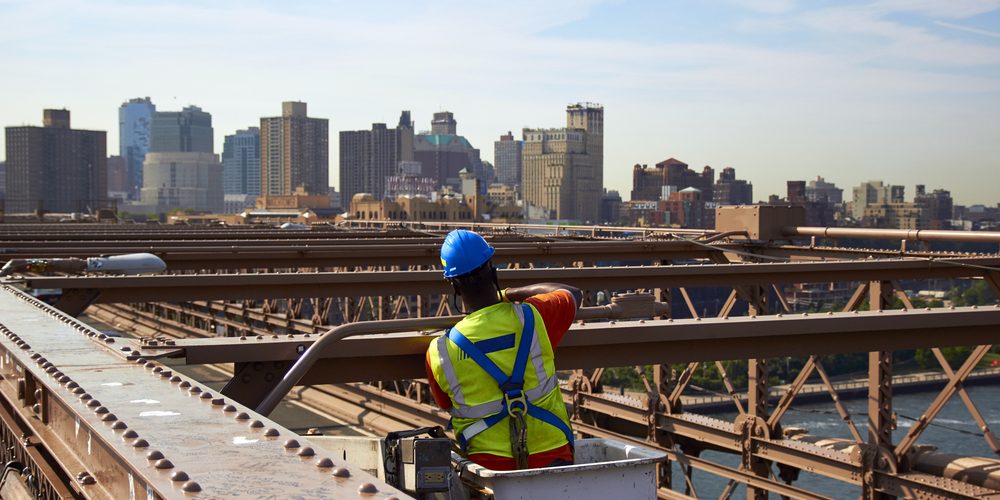State and local governments across the United States are looking forward to finally receiving the infrastructure funding approved by Congress in late 2021. It will make a big difference when it comes to repairing and replacing aging bridges, roads and other infrastructure.
Unfortunately, the influx of cash won’t fix everything. Much of the new infrastructure money is earmarked for larger, more impactful projects. This means municipalities, bridge owners and managers are still facing funding shortfalls when it comes to repairing smaller bridges. While these bridges may not make it onto the national project docket, they are critical for maintaining traffic flow through local communities.
In this article, we’ll reveal nine proven ways to extend the lives of bridges while on a shoestring maintenance budget.
1. Set smart priorities.
Age shouldn’t be the only factor you consider when setting bridge maintenance priorities. Take into account other things like the actual condition of a bridge, it’s value to the community and whether you could stretch funds by practicing preventative maintenance on it to slow further degeneration. Working together with your team and applying some creative thinking will help you come up with new ways to prioritize work and stretch limited budget dollars.
2. Conduct thorough inspections.
When you have bridges inspected, make sure your teams look beyond the surface. Of course it’s important to check out the condition of obvious things like a bridge’s joints and deck. But it’s also critical to leverage drones, x-ray equipment and lifts to regularly look at areas under, above and deep inside a bridge. Spending a little more time and money on more complete inspections can help prevent unexpected surprises that could have a big impact on your bridge maintenance budget.
3. Prevent small problems from turning into BIG ones.
One of the key bridge maintenance issues across the U.S. is that small fixes are often ignored until they become serious problems. When this happens, repair costs end up being higher than they would have been had the issue been addressed earlier. If you do one thing to optimize your bridge maintenance spending, change your priorities from focusing exclusively on big problems and spend more time and money on smaller preventative repairs.
4. Pay special attention to bridge joints.
The most vulnerable points on older bridges are their joints. The structures have strip seals to waterproof the joints, which can wear out. Some bridges lack this sealant altogether. In either case, this allows moisture and debris to accumulate in a joint, which can cause significant deterioration. This often results in structural failure. Installing and maintaining joint seals is a cost effective way to prevent bigger problems in the future and a proven way to extend the lives of bridges.
Tip: Look out for tears in joint seals. Clear objects that could rip into them, such as bolts, screws, nails, wood and trash. Pay extra attention to bridges in high traffic areas where it’s more likely that junk and other road debris will get into joints.
5. Implement a joint repair program.
Because of normal wear and tear and aging, you have to regularly replace joint seals. Make it a point to replace them before they completely fail to protect the superstructure and substructure of the bridges under your care. It will save you from having to make bigger and more costly repairs in the future.
Tip: When you replace or rehabilitate bridges, move the joints off the bridge to eliminate the need to maintain them as often in the future. One solution is using an integral abutment, allowing you to move the joint to the end of the approach slab.
6. Clean bridges regularly.
One of the most cost effective things you can do to extend the lives of bridges is to regularly use a road sweeper to clean them. Removing dirt, sand, rocks, road salt and trash prevents water ponding and backups that could cause harm to joints. Water is the top cause of damage to bridges. Ensuring that it flows off them as intended will help maintain structural integrity and extend life.
Tip: Instead of cleaning bridges annually, consider doing it twice a year or quarterly. It’s a relatively inexpensive way to prevent high cost repairs.
7. Invest in remote water gauges.
One of the top causes of catastrophic bridge failures is scour. It happens when water removes the soil that supports a bridge’s foundation. The good news: This is an issue that can be identified and resolved before a failure occurs. If you install remote water gauges on your bridges, you’ll know when water levels and flow are high. This is a signal that scour could be happening and you need to inspect impacted areas and take action if necessary.
8. Stop using salt to melt ice.
Salt-based deicers are great at melting ice. However, they’re also highly corrosive to steel and leach into concrete. This can accelerate the deterioration of the superstructures of the bridges you manage. Switch to sand or magnesium chloride, which are highly effective at melting ice, less corrosive and more environmentally friendly.
9. Don’t unintentionally increase bridge load levels.
Too much asphalt, the result of applications over the years, increases the load placed on a bridge. An excessive load puts strain on the structure. A best practice is to mill the surface prior to putting down an asphalt overlay. It’s also better to use thin overlays instead of the standard thick ones. It will extend the lives of your structures and save you scarce maintenance dollars over the long run.
In the end, the best way to get more life out of the bridges you manage is to invest in an ounce of prevention today. It will prevent you from having to spend much more on a pound of cure tomorrow.
Featured image by ONiONA_studio/Shutterstock

